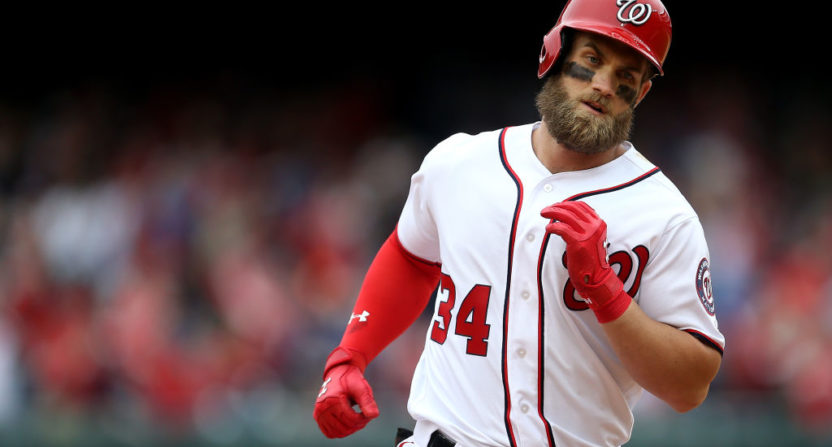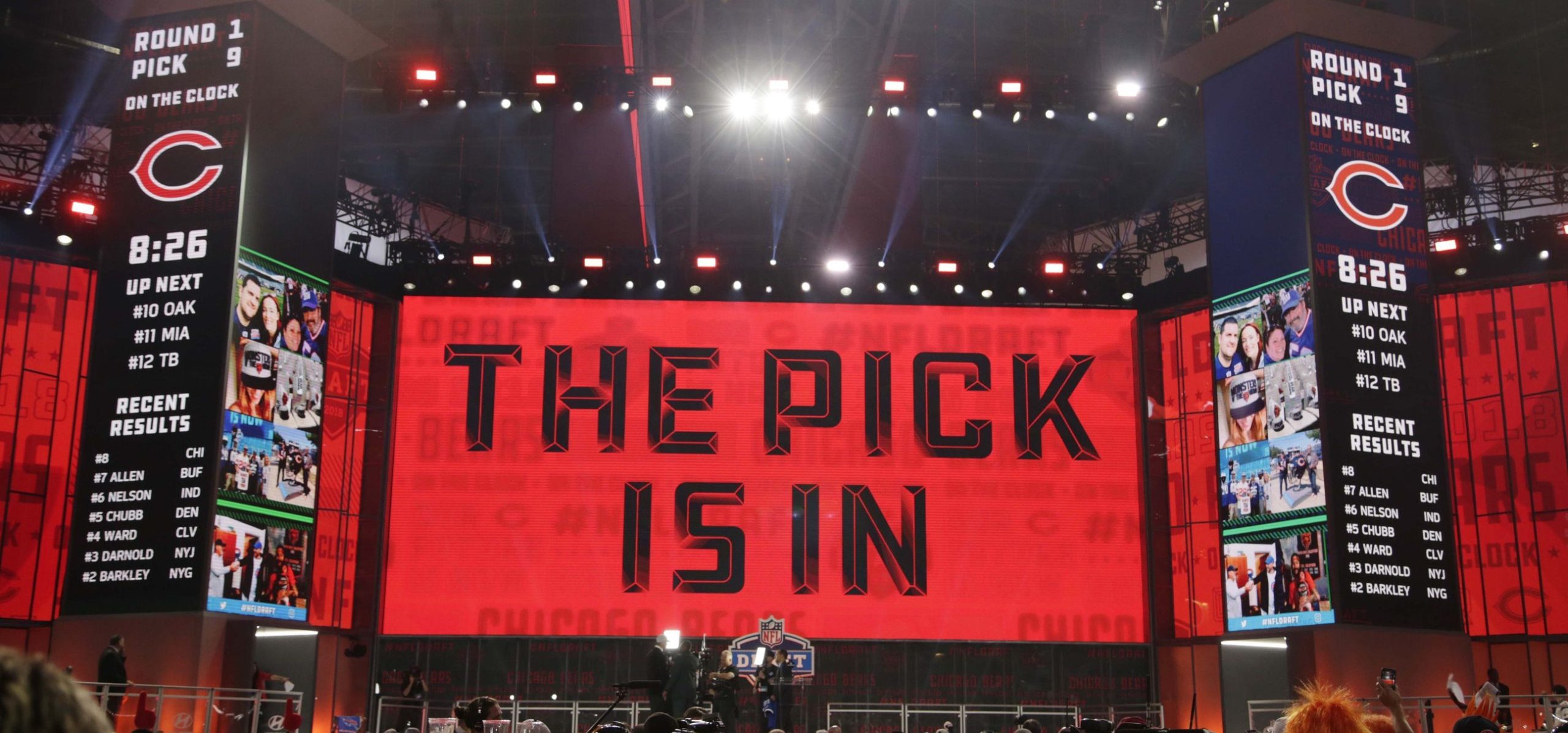On Sunday, the Washington Nationals played a double-header against the Philadelphia Phillies. In the first game, Bryce Harper went 2-for-4 and launched his 12th home run of the year. In the second game, he went 3-for-4 with a single, a double and two RBIs. That performance came a day after he whacked his second walk-off long ball of the season.
It was just another weekend for the 2015 NL MVP, who looks determined to put another trophy on his mantle.
As of Monday afternoon, Harper’s .384 batting average ranks second in the NL, as does his .752 slugging percentage. His .500 on-base percentage, 1.252 OPS and 212 wRC+ lead the league. He also ranks thirds in home runs, second in RBIs and third in walks.
Two years after putting up a season that many people figured he’d never match, Harper has upped the ante. Through six weeks of baseball, he has improved on one of the best offensive seasons of all time.
We’ll dig into the stats in a minute, but first a word on 2016. Last year, Harper got off to a scorching start in April, then slowed down a few weeks into the season and never recovered. His numbers (.243/.373/.441) wound up respectable for most corner outfielders but massively disappointing for Harper. The reigning MVP was making contact as much as ever, and lifting the ball as often as ever, but the ball wasn’t traveling as hard or as far, as his exit velocity dropped. For months, Harper denied reports that he was suffering from a shoulder injury, and we still don’t know exactly what the problem was. But with each passing home run he hits in 2017, it looks more and more likely that 2016 was an injury-tarnished blip.
And if we view 2016—and not 2015—as the fluke, it becomes possible that the outfielder’s start to 2017 is much more than just a well-timed hot streak.
Harper is walking about as often as he did in 2015, while striking out less. He’s launching home runs at a faster rate. His exit velocity is back up. In essence, his plate discipline is only getting better, and his power, which disappeared in 2016, is back. That’s a scary combination for the rest of the NL.
Unsurprisingly, there are plenty markers that Harper’s gaudy stats this year are aided by good fortune. His BABIP of .419 is unsustainably high and his home run/fly ball rate (31.6 percent) is at a career-high. He’s not hitting the ball in the air any more than in the past. His Statcast numbers are strong but not quite Judgian.
But here’s the thing: None of that is that different from the stats he sustained throughout 2015, when he batted .369 on balls in play and 27.3 percent of his fly balls sailed over the fence. Not many players can consistently keep up those kind of rates, but is it possible that Harper—who’s been touted as a generational talent since he was 16—actually can?
From 2002 through 2016, there were 26 instances of a player maintaining a home run/fly ball rate of 27 percent or better (including Harper in 2015), so it’s not impossible. All it takes is to be a top-flight power hitter. Jim Thome is on the list four times. Ryan Howard and Barry Bonds three times. Sammy Sosa, Chris Davis and Jack Cust(?) are there twice apiece. The best of the best can hit home runs on 27 or even 32 percent of their home runs. Given that Bryce Harper is probably among the best of the best, it’s fair to expect that he can too.
In other words, it’s entirely possible that Harper’s 50-home run pace is here to stay.
Obviously that .384 batting average won’t last once Harper’s BABIP comes back to Earth, but given how hard he hits the ball, he’ll always fare better than most hitters on balls in play. And most promising of all, Harper is hitting more balls in play than ever, with a career-best 17.5 percent strikeout rate.
So in essence, we have a guy who is missing less than ever, while whacking the ball as always, consistently hitting it in the air, showing an elite-level home run/fly ball rate and maintaining his freakishly high walk rate. If you buy into the theory that a now-healed shoulder injury sapped Harper of his power in 2016, there’s little reason to think he can’t keep slugging, while keeping up his elite (and maybe improving) plate discipline.
Not long ago, Harper’s MVP season looked like an outlier fueled by batted-ball luck and a flukish home-run rate. But the more he hits like he has in 2017, the more we have to wonder whether those insane numbers weren’t a fluke at all.






